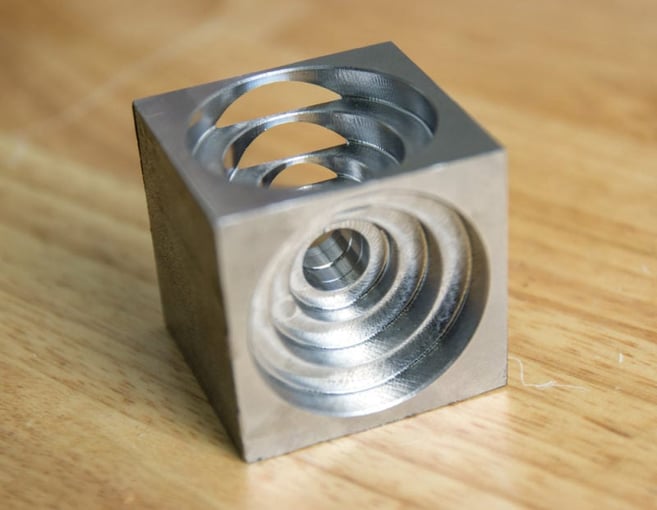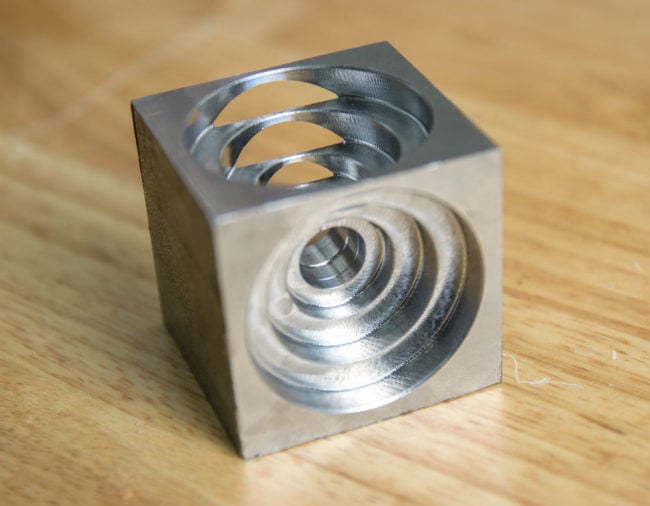
Work offsets let your machine know where your stock is and where your part will be when you’re done. It might sound rudimentary, but work offsets are important.
Most trained machinists know about a Turner’s Cube, as it is a test of skill to create cubes within a cube, using circular holes. The simplicity in design with a Turner’s Cube is deceiving, as it requires precise squaring, measuring, and quality workholding.
Often, you’d be able to see offset and measurement miscalculations in any part that you create, but sometimes you can cheat parts or lie to the machine to make up for such mistakes. A Turner’s Cube is incredibly unforgiving when things are off.
We recently looked to create one of these cubes for a cutting video – since making chips is great fun, but having a cool part on the shelf afterward is pretty cool too.
While trying to compete with a marketing deadline, I found myself rushing through this Turner’s Cube in mild steel. Machining the part and showing off the capabilities of our PCNC 770 went great (video will be released soon), but I got a first-hand lesson on the old adage, “Measure twice, cut once.”

When making one of these cubes on a mill, you are essentially drilling a through-hole from both side, which is one reason why this part is so unforgiving. If you’re part isn’t square, your measurements are off, your Haimer isn’t calibrated, or you forget that zero on a finished side is different than zero on a rough side – which was about .050” difference in my case – it’s incredibly apparently, thanks to notches or steps within your bore holes.
After taking a step back and remembering to measure twice… three… let’s make it eight times before ever hitting “Cycle Start,” my Turner’s Cube started to take shape.
Be sure to check out the upcoming video to see the chips fly, and a final, measured… remeasured, and measured again version of a Turner’s Cube in steel.


